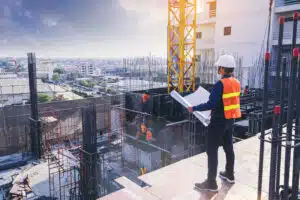On August 7, 2022, The Inflation Reduction Act (IRA) passed the Senate, and it is expected to pass the House quickly and be signed by President Biden next week. It embodies parts of the former Build Back Better Act and addresses energy, health, and tax policy. Senators Chuck Schumer and Joe Manchin, who shepherded the legislation, said its goal is to "fight inflation, invest in domestic energy production and manufacturing, and reduce carbon emissions by roughly 40 percent by 2030."

The Act has a direct bearing on Engineered Tax Services clients because of its changes to both the 45L energy-efficient home credit (45L) and the 179D energy-efficient commercial building deduction (179D), which are part of the Act’s provisions devoted to fighting climate change and to conserving energy. The Act incentivizes the construction and renovation of energy-efficient buildings in the U.S. by extending and expanding 179D deductions and 45L tax credits. Here are the new regulations:
179D Energy-Efficient Commercial Building Deduction Changes
- It will be extended in its current form until December 31, 2022.
- Beginning January 1, 2023, the deduction will be increased.
- Energy reduction (ER) will be changed from 50% to 25% compared to the most recent ASHRAE Standard 90.1 determination no later than four years prior to the placed-in-service date.
- After January 1, 2023, the deduction will be reduced to $.50 per square foot, plus $.02 for each percentage point above 25% ER, not to exceed $1.00 per square foot; OR taxpayers can claim the bonus deduction for $2.50 per square foot, plus $.10 per square foot for each percentage point above 25% ER, not to exceed $5.00 per square foot IF the prevailing wage requirement is met, which states that any laborers, workers, contractors, and subcontractors who worked on the project were paid wages not less than base wages determined by local labor authorities.
- The Act introduces new qualified retrofit plan qualifications and removes partial benefit allowances.
- 179D’s expansion will allow 179D deductions to be allocated to any non-profits, tribal properties, and REITs, and it includes the existing provision for publicly funded projects.
45L Energy-Efficient Home and Multifamily Credit Changes
- The Act has extended prior rules from December 31, 2021 to December 31, 2022.
- The Act’s changes will be implemented from January 1, 2023 through December 31, 2032.
- The Act mandates a lower-based line credit of $500 per unit for multifamily units;
- OR a bonus credit increase to $2,500 per unit for multifamily units if the prevailing wage requirements are met.
| Home Type | Efficiency Standard | Base Credit | Bonus Credit |
|---|---|---|---|
| Single-Family | Energy Star Single-Family | $2,500 | N/A |
| Net Zero Single-Family | DOE Zero Energy Ready | $5,000 | N/A |
| Manufactured Homes | Energy Star Manufactured Homes | $2,500 | N/A |
| Net Zero Manufactured Homes | DOE Zero Energy Ready | $5,000 | N/A |
| Multifamily Units | Energy Star Manufactured Homes | $500/unit | $2,500/unit |
| Net Zero Multifamily | DOE Zero Energy Ready | $1,000/unit | $5,000/unit |
Please note that as of August 12, 2022, these regulations have not been signed into law and are subject to change. Please stay tuned to this blog, since we will update you on any additional changes or news concerning this legislation.
If you have completed work on energy-efficient buildings or retrofits any time in the prior three years, you may be eligible to claim either of these incentives. If so, please contact your Engineered Tax Services representative for a complimentary pre-qualification review and cost benefit analysis.



